
© Presse-citron
For the first time in years, a feeling of deep disappointment struck observers, investors and Apple fans at the end of the keynote presentation of the latest iPhones.
Apple had promised a “new era” for its best-selling product in the world. This stage was to be marked by the arrival of Apple Intelligence, the AI developed internally. The iPhone 16 thus embodied the first iPhones designed for Apple Intelligence.
Problem: AI is not available at the release of the iPhone 16. Worse, all the features unveiled at WWDC in June will be deployed drop by drop… for American customers. For the others, we will have to wait until next year at best. We have known better launches at Apple.
Because on the hardware side, the company continues to mark time. The iPhone 16s look very similar to the iPhone 15s, which were themselves very small evolutions of the iPhone 14, itself an iteration of the iPhone 13, itself… We’ll stop there, you get the idea.
Since the iPhone 16/16 Plus is the subject of this test, let’s focus on this model. What are the new features announced by Apple ? New colors, the arrival of the Action button, the integration of Camera Control and other technologies from the Pro versions of previous years. Enough to pay the 969 euros (minimum) requested by Apple ? Response after three weeks of testing.
What we liked about the iPhone 16/16 Plus
The new colors
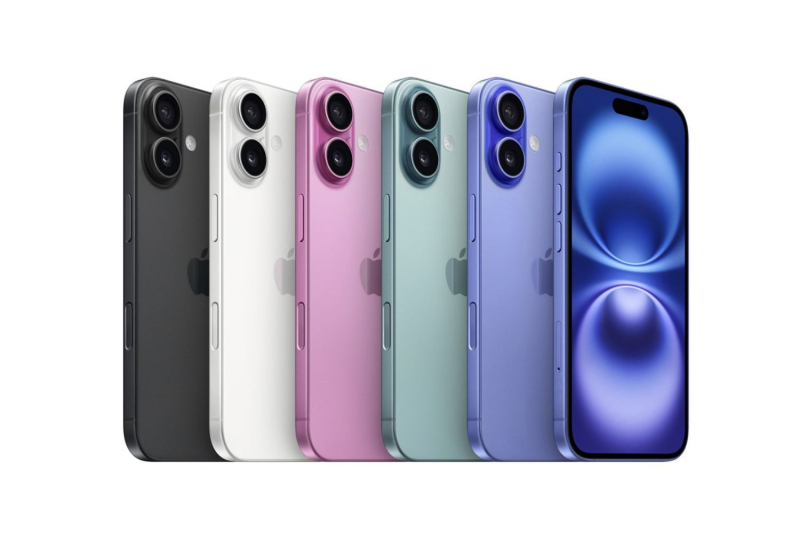
iPhone 16 © Apple
If the Pro models are carbon copies of previous versions (except for a slight enlargement of the screen and the integration of the Camera Control button), the iPhone 16/16 Plus got a little more attention.
Apple first worked on solidity. The iPhone 16/16 Plus is covered with ultra-strengthened glass on both the front and back. It is also IP68 certified to survive an accidental immersion (we emphasize this point) of 30 minutes at a depth of 6 meters. Apple can thus affirm that its iPhone 16 is 50% more robust than its predecessor. Of course, we will have to see over time whether this promise is kept. For now, nothing to report.
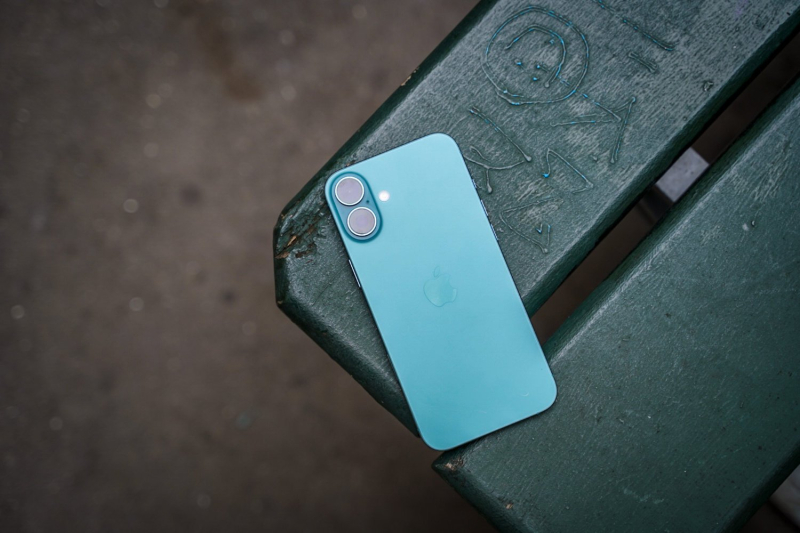
© Presse-citron
The iPhone 16 is also more eco-friendly. The chassis is cast in 85% recycled aluminum. The entire smartphone is made of 30% recycled elements. Otherwise, it's the same, except for the integration of the Action and Camera Control buttons and the vertical orientation of the photo sensors (we will come back to this).
The main new feature is the choice of new colors. While the Pro models come in three very dull colors, the classic versions are offered in flashy shades with a matte finish matching the aluminum chassis. This colored monoblock is a real success, so much so that we regret that Apple did not make the same choices for the Pro.
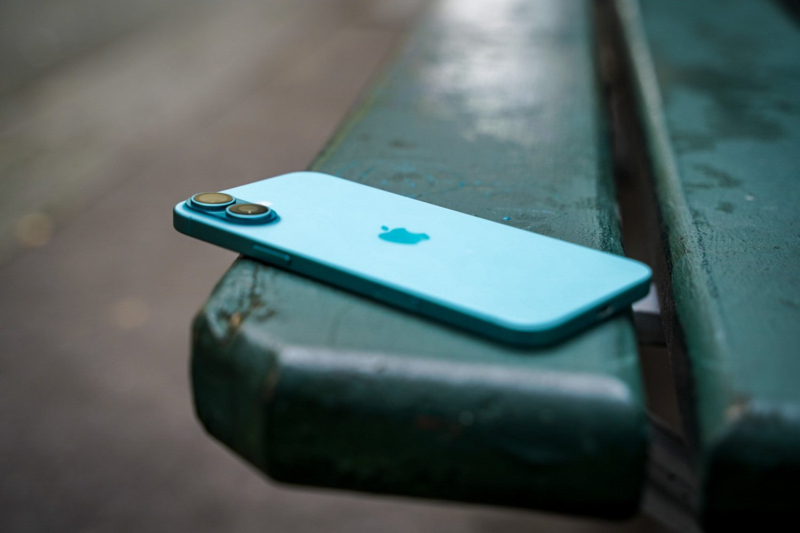
Lemon squeezer©
To accompany the classic black and white, the iPhone 16 and 16 Plus are therefore offered in “Barbie” pink, teal green (our test model) and ultramarine blue (the one we see on all the 4 x 3 visuals).
The iPhone 16 does not change much but enough to remain sexy. And in addition, its grip remains comfortable, even for the Plus model, certainly imposing but very pleasant to use on a daily basis.
The integration of the Action button
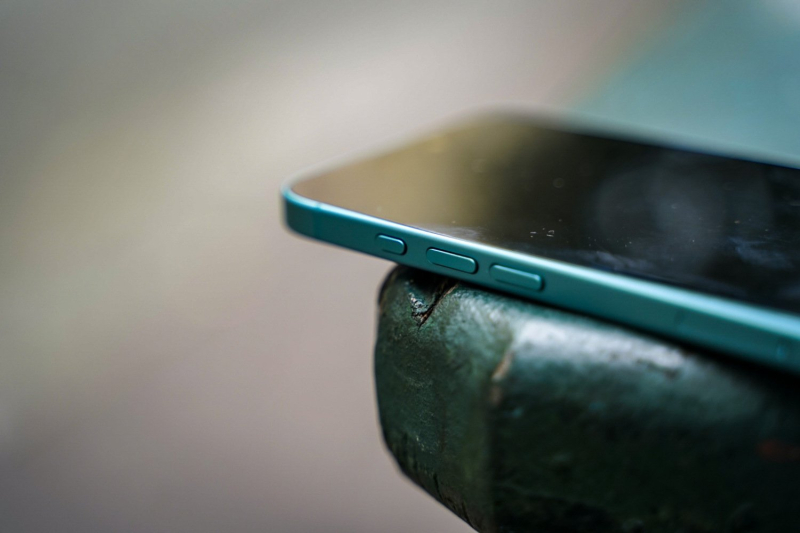
© Lemon squeezer
Last year, Apple introduced the Action button, a new physical button that replaced the silent button. Good news: the iPhone 16 inherits this button that does everything (or almost).
By pressing this button continuously, you can still activate/deactivate silent mode. But the originality of this new feature lies in the customization. In total, Apple offers 12 different actions:
- Silent
- Activate a favorite focus mode
- Turn on the camera (not really useful with Camera Control)
- Turn on the torch
- Launch the voice recorder
- Launch Shazam for music recognition
- Translate a conversation
- Nothing at all all
- Access a favorite Accessibility feature
- Access a favorite control feature (e.g. alarm or dark mode)
- Access the magnifying glass
- Launch a previously configured shortcut, which opens up the field of all possibilities
We explained all the good things we thought about the Action button in our iPhone 15 Pro review last year. Seeing it land on the standard version is therefore excellent news. Even if we think that Apple could have already done it last year.
Photo and video quality

© Lemon squeezer
As we mentioned above, Apple has revised the layout of the photo modules, which are now vertical. This choice is not insignificant: it aims to encourage users to turn to spatialized photos and videos to view them on the Vision Pro. Suffice to say that for the moment, they represent a number of users close to the Wednesday evening book club.
The real new feature of the iPhone 16/16 Plus, is its new 48 MP main sensor. In the absence of a telephoto lens (unacceptable on a smartphone worth 1,000 euros), Apple finds a little trick to create a 2x optical zoom in croppingin the sensor to offer 24 MP shots. It can go up to a 10x digital zoom. The ultra wide-angle, which is always accompanied by a 12 MP sensor (with autofocus), also allows you to indulge in the joys of macro photography (very successful by the way).
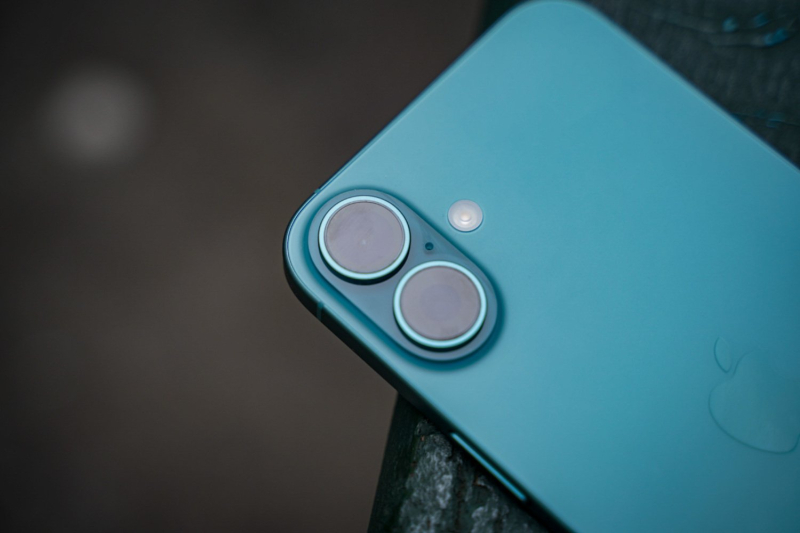
© Presse-citron
No need to dwell on the quality of the main module, it is in line with the continuity of this that Apple offered.The iPhone 16/16 Plus still stands out for its great color fidelity, so the addition of the 48 MP sensor improves sharpness. Don't expect a revolution either, this new generation is still haunted by its old demons: digital noise is still a little too visible in low light (even if it's much better) and, above all, the lens flare has still not been corrected in 15 years.

Wide angle © Presse-citron

Zoom 2x © Presse-citron

© Presse-citron

© Presse-citron
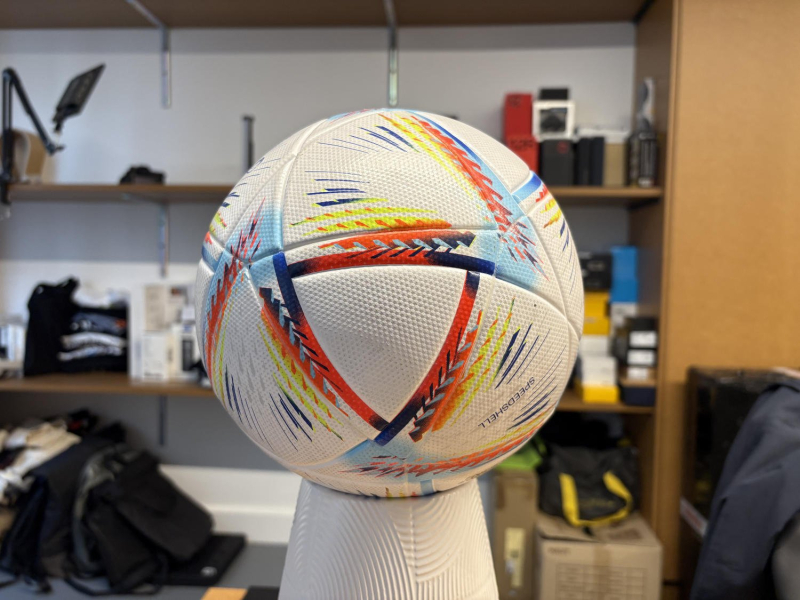
© Presse-citron
The lack of a telephoto lens is also starting to seriously stain the image, even if the pseudo 2x optical zoom does its job perfectly. However, the limits of the digital zoom are quickly felt. In good lighting conditions, the 10x zoom remains correct but far from what the competition can offer. In low light, we will not exceed the 4x magnification factor, the digital noise being far too visible beyond that. We are far from what a Pixel 9 offers, to name just one.

Ultra wide-angle © Presse-citron

Grand-ange © Presse-citron
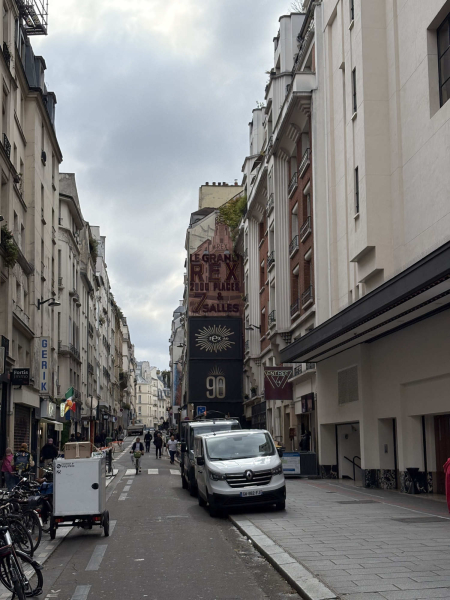
Zoom 2x © Presse-citron

Zoom 10x © Presse-citron
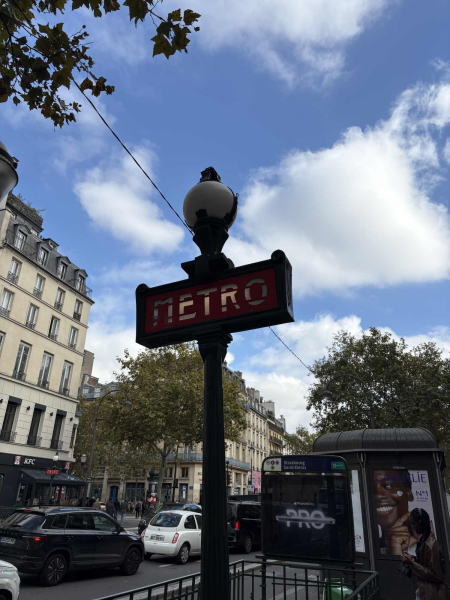
Wide angle © Presse-citron

Zoom 2x © Presse-citron

Ultra wide-angle © Presse-citron

Zoom 2x © Presse-citron
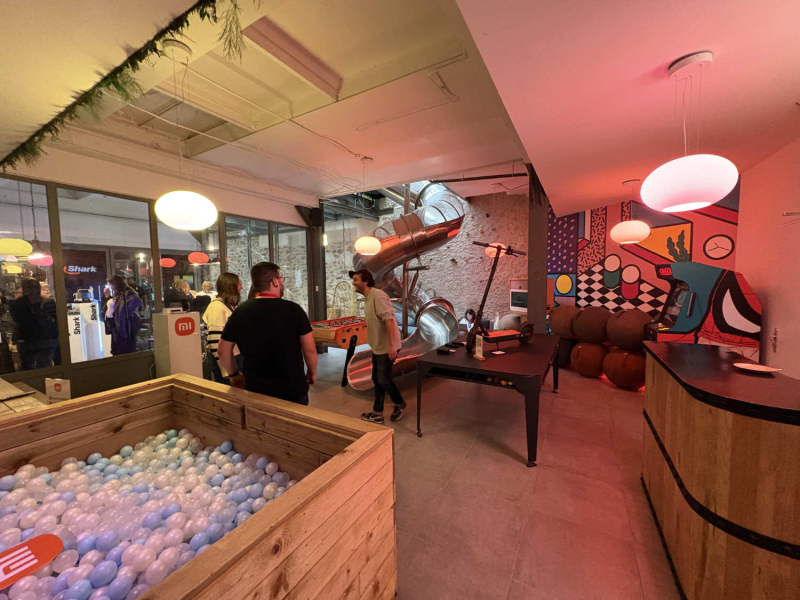
© Presse-citron
The iPhone 16, on the other hand, remains an excellent portrait camera phone. The clipping is still precise and the bokeh natural. You can also adjust the intensity of the background blur before, during and after the capture. No problem for selfie lovers either: the iPhone 16 is very effective.

© Presse-citron

© Presse-citron

© Presse-citron
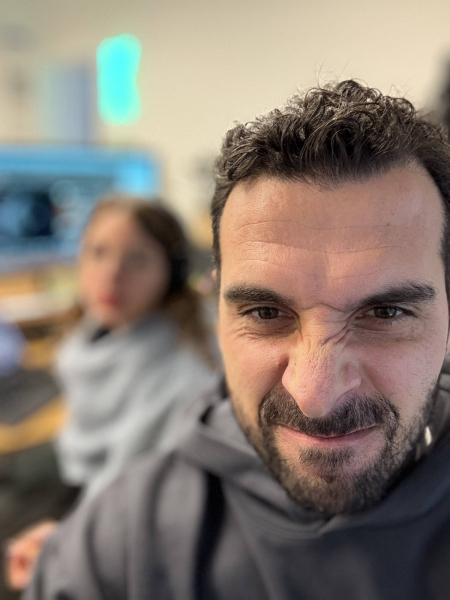
© Presse-citron

© Presse-citron
Apple had the good idea to work on its < em>Photographic styles, a feature that allows you to apply color filters to photos. More numerous, they are now available during photo shooting as well as in the editing tools. While some styles will not be used often, others are addictive. For example, we are thinking of the two excellent black and white styles.
200% Deposit Bonus up to €3,000 180% First Deposit Bonus up to $20,000More versatile in photography, the iPhone 16/16 Plus is especially good in video. Apple maintains its lead over the competition thanks to some impressive new features. In addition to impeccable stabilization, the iPhone 16 now includes a stunning wind noise reduction feature.
Apple is also introducing Audio Mix, a new AI-powered audio editing tool that can isolate sounds from video in a variety of ways. Four modes are available:
- Standard : all sounds are captured
- In-Frame : everything that is in the shot is captured (distant voices, background noises are filtered)
- Studio : reproduces a radio/podcast sound
- Cinematic: picks up voices in the center of the frame and slightly reduces surrounding noise (without canceling it out completely)
This feature is without a doubt the most impressive of this generation.
Improved performance and battery life
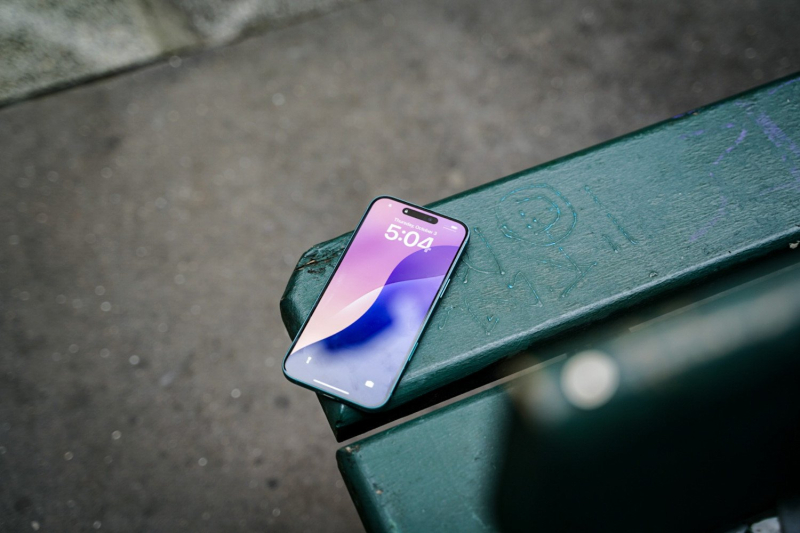
© Presse-citron
The iPhone 16 features the new A18 chip, the « first Apple chip designed specifically for the models non-Pro». Let's quickly go over the numbers: it has 6 CPU cores, 5 GPU cores, 16 NPU cores (for AI) and a specific chip for photography.
This architecture allows the iPhone 16 to display CPU performance 30% faster than the iPhone 15, 50% faster than the iPhone 14 and 13 and 60% higher than the iPhone 12.
On the GPU side, the iPhone 16 is 40% faster than the iPhone 15, 50% faster than the iPhone 14 and 70% faster than the iPhone 13. It is also twice as efficient as the iPhone 12. That's the least fun.
In use, this new chip does three things: enhance the raw performance of the iPhone, improve battery life, and ensure a lifespan of 6 or 7 years from today.
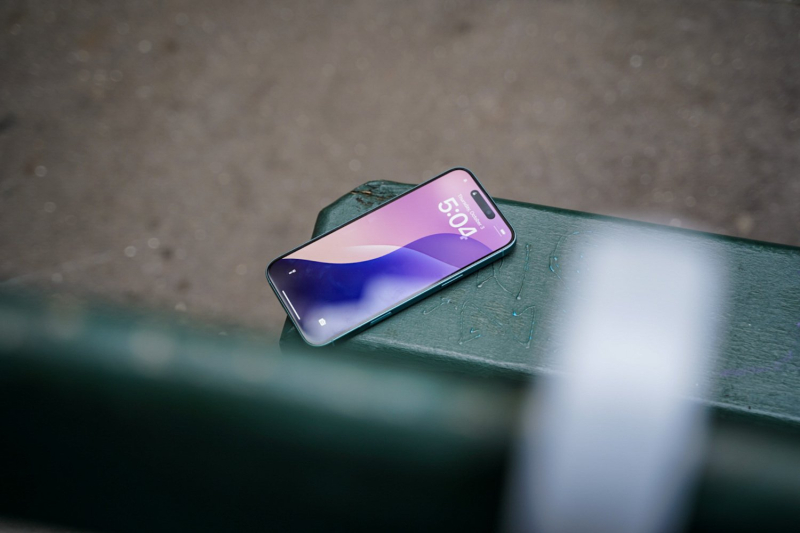
© Presse-citron
We won't dwell on the raw performances which are historically excellent on iPhones. Apple still masters its subject for this generation. The iPhone 16/16 Plus can do everything with disconcerting ease. It thus becomes the ideal companion for work and multimedia.
While Apple has long been The bête noire of video game publishers, the iPhone is establishing itself as the best consumer model for gaming.Apple can also rely on an increasingly rich catalog. In addition to the games from the App Store, the iPhone 16 can run those from Apple Arcade (better optimized) as well as the latest AAA games developed for the iPhone. Among the most famous, we find Death Stranding Director’s Cut, Resident Evil 4 or even Assassin’s Creed Mirage.
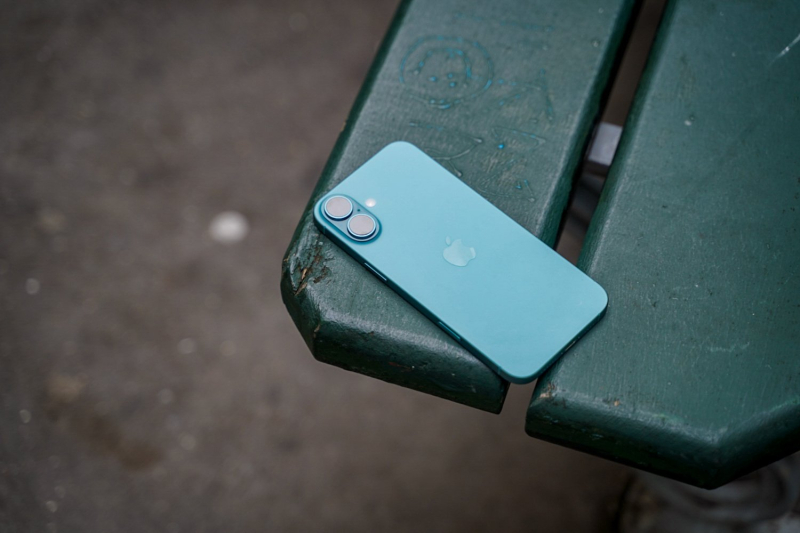
© Presse-citron
In terms of battery life, Apple has built its iPhone 16/16 Plus around a larger battery. By combining it with the A18 chip, < strong>The iPhone 16 Plus retains its title of the most enduring smartphone in its category. Expect a day and a half of intensive use and up to two days with the help of energy-saving modes. Expect half a day less for the smaller iPhone 16.
Thanks to a new way of assembling components, Apple seems to have better control over temperature variations. We did not encounter any heating problems and throttling (reducing performance to maintain an acceptable temperature) is rather rare. A real success if we remember the setbacks of the previous generation.
What we liked less about the iPhone 16/16 Plus
The charging is still too slow
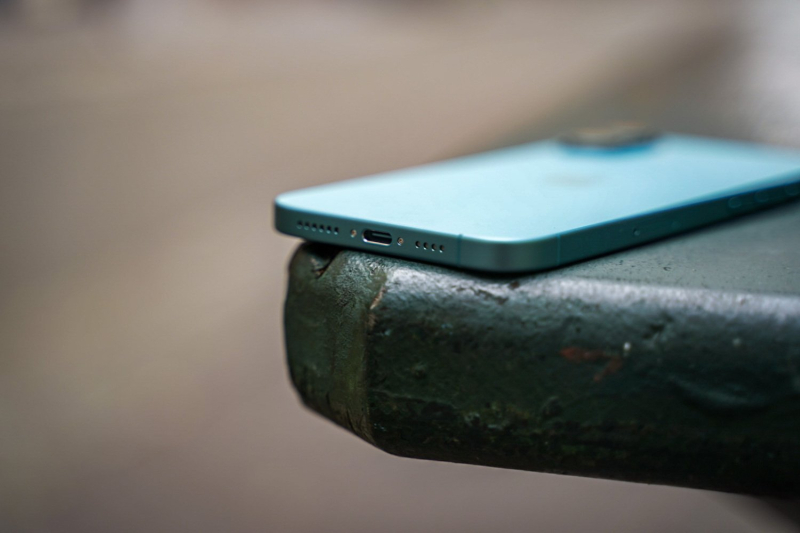
© Presse-citron
If Apple is regaining its splendor in the field of autonomy, the speed of recharge is still among its main weak points .The iPhone 16 and 16 Plus are still limited to a charging power of 25 W. Apple always invokes the same two arguments: ultra-fast charging is not necessary for daily use since we mostly charge at night, and it tends to degrade the battery.
While the first argument is entirely acceptable, the second is factually false. Many Chinese brands (OPPO, OnePlus, Xiaomi) have managed to develop ultra-fast charging technologies that do not affect battery life in any way.
Above all, the iPhone 16/16 Plus is sold for more than 1,000 euros. At this price, we are entitled to expect the best of the available technology. Also, an ultra-fast recharge becomes essential for the most demanding users. It happens regularly in the context of our professional activity to have to quickly recharge our smartphone in the afternoon. With the iPhone, we systematically take an external battery.
In addition, slow charging during the night can be ensured by wireless charging (MagSafe on iPhone). Some will explain that it is better to have excellent autonomy and slow charging. We answer them that for 1,000 euros, we are entitled to demand both.
The new button Camera Control
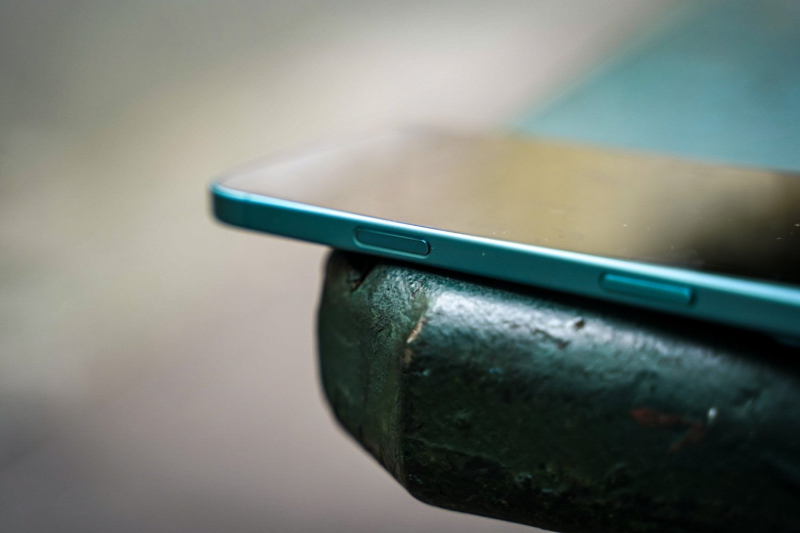
© Lemon squeezer
Apple refuses to use the word “button” but we'll do it anyway, for practical reasons first, but also because you can write what you want. The new BUTTON Camera Control is one of the most controversial new features of the iPhone 16. Why ? Because Apple has been trying to remove physical elements from its smartphones for many years (starting with the good old 3.5 mm jack), so much so that some predicted the disappearance of the USB-C port.
Since the iPhone 15, the company has made a 180° turn. After the Action button, here is the Camera Control button. As its name suggests, it allows you to take control of the camera.
Located on the right edge of the iPhone 16, Camera Control is indeed a physical button that launches the camera with a simple press.It also features haptic feedback technology that lets you navigate shooting settings by alternating between swiping gestures and light taps.
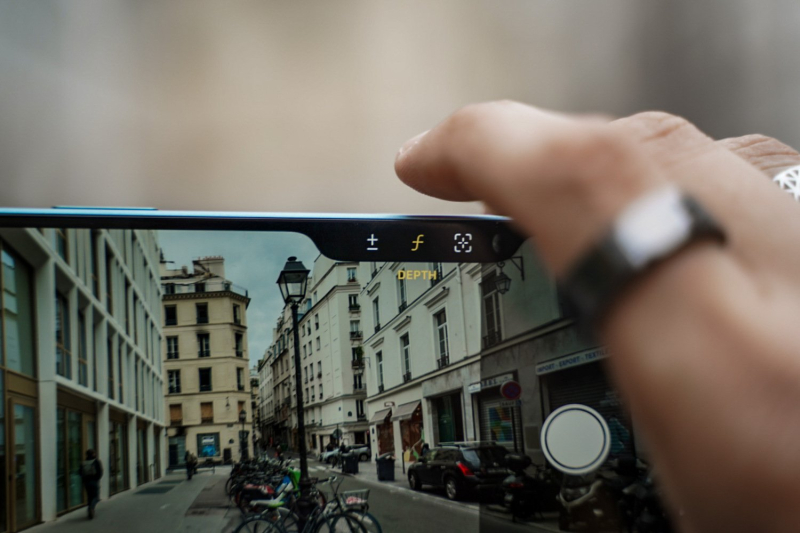
© Presse-citron
As we indicated in our first hands-on with the iPhone 16 Pro, this new hardware feature is not not a bad idea in itself… for a Pro model. Photography enthusiasts (or professionals) find the physical sensations of a case in an iPhone.
Problem: The iPhone 16 is not intended for a professional audience. Also, for “general public” use, the touch controls remain more intuitive. Camera Control complicates the experience, which is the opposite of the brand's philosophy.
Furthermore, the button layout is not the most practical. Apple seems not to have really chosen between landscape and portrait formats. The button is therefore positioned in between, which makes the experience uncomfortable in both positions. After a few days of fun, we end up abandoning this button and going back to our touchscreen habits.
Finally, Camera Controlis only effective in one scenario: when you need to quickly pull out your phone and shoot in a matter of seconds. Everyone can make mistakes, even Apple.
A 60 Hz screen, in 2024…
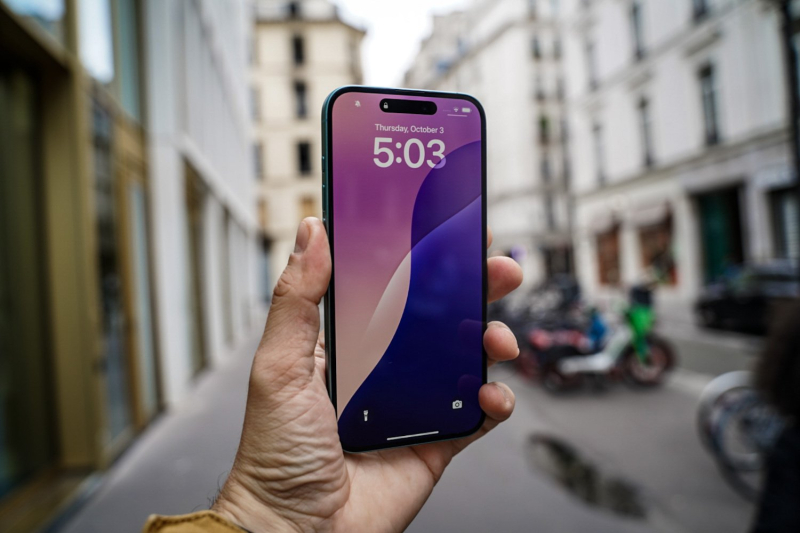
© Presse-citron
The iPhone 16 has exactly the same 6.1' Super Retina XDR screen as the iPhone 15. With OLED technology, it displays excellent contrasts and is sufficiently fluid for everyday use. Yes but…
This screen has two flaws. First, its brightness of 1,600 nits in HDR peak places it very far from the competition.Google's Pixel 9 reaches 2,000 nits without flinching. A significant advantage for maintaining reading comfort in bright environments, especially in direct sunlight.
Above all, the screen refresh rate is still limited to 60 Hz. We know what Apple's defenders will say: “iOS optimizations are such that the screen is as fluid as an Android smartphone with a frequency of 120 Hz”. First, this statement is false, the difference in fluidity of a 120 Hz panel being visible to the naked eye. It is true, however, that the iPhone 16's 60Hz screen remains fluid.
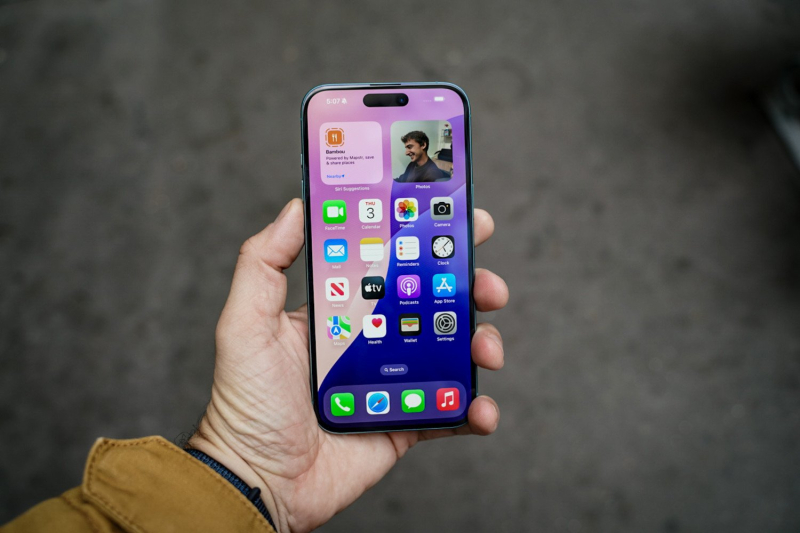
© Presse-citron
There are nevertheless uses for which this technical limitation becomes inconvenient. While the software optimization handles gaming rather well, browsing the web or social networks is much less comfortable than with a 120 Hz panel.< /p>
If we take a step back from the market, we see that in 2024 models sold for 200 euros will have a 120 Hz screen . This is the case, for example, with the CMF Phone 1. Obviously, not benefiting from technology of this caliber on a model sold for 1,000 euros is a blot. All observers were already criticizing this choice last year. In 2024, this search for profits to the detriment of the user experience becomes unacceptable. Red card!
Our opinion on the iPhone 16/16 Plus
Is the feeling of disappointment felt at the announcement of the iPhone 16/16 Plus justified?? Yes, but the three weeks of testing still allow us to qualify our statement. From a hardware point of view, the iPhone 16 ultimately turns out to be rather attractive. The new colors, the new 48 MP main camera module, the very powerful A18 chip, the improved battery life and the better heating management have definitely convinced us.
However, two major problems dampen our enthusiasm. First, the iPhone 16 suffers from unacceptable flaws for a smartphone sold for 1,000 euros in 2024. The still very slow charging, the absence of a telephoto lens, the integration of a discounted USB-C, the storage of only 128 GB as well as the 60 Hz screen are hardware choices aimed more at maintaining comfortable margins than at satisfying users. Of course, Apple is used to this, but 2024 is one year too many.
Above all, the absence of Apple Intelligence in France until at least 2025 takes all the salt out of this generation. Apple has indeed repeated to anyone who would listen that these iPhone 16s were the first designed for its AI. We won’t get a taste of it until the end of next year, when Apple launches the iPhone 17. Too far away.
Is the iPhone 16 a model to forget for all that ? Not necessarily. Owners of the iPhone 13 (and older) can invest in this model if their finances allow them. The iPhone 16 is guaranteed to welcome Apple Intelligence, even if it arrives later. The hardware advances, inherited from last year's Pro versions, are also more than enough to completely transform their daily experience. On the other hand, owners of the iPhone 14 and newer can still wait.
📍 To not miss any Presse-citron news, follow us on Google News and WhatsApp.

